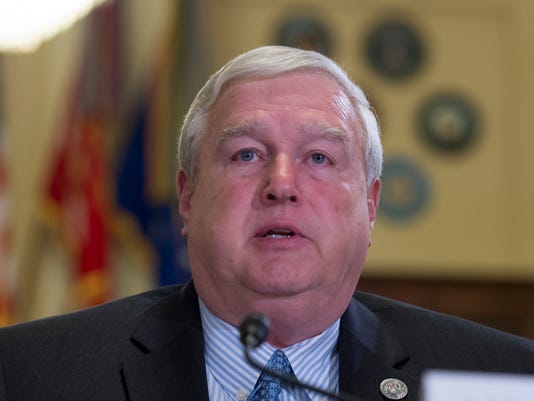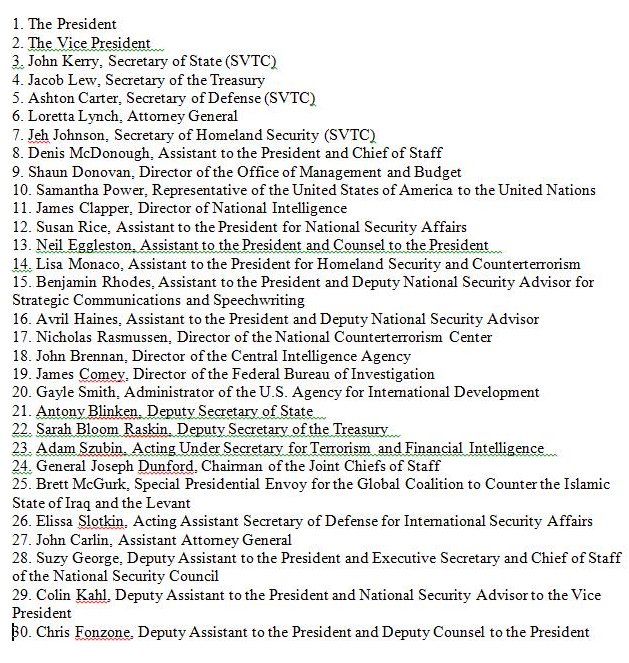Curious, but factual, it comes down to protecting the unions at the VA. Some locations operate with four unions, while the larger VA facilities have five unions, the worst being SEIU.
This is the reason, the Department of Justice is protecting legal actions at the VA and wont allow the FBI to do deeper investigations for fraud, waste and corruption. Need more proof?
Top VA benefits official Pummill retires

AirForceTimes: Danny Pummill, who took over the post last October, said in a letter to VBA employees that he had planned to retire from his deputy post in 2015 but remained on the job after being asked to oversee the agency. The retired Army colonel has worked at VA since 2010.
The job of overseeing $90 billion in veterans benefits and dozens of regional offices nationwide now falls to acting principal deputy undersecretary Tom Murphy, who has been serving in that role since Pummill’s promotion last fall.
Pummill was suspended for two weeks in March for “lack of oversight” in a relocation scandal involving two other high-ranking VA administrators, a reprimand that irritated some lawmakers who wanted harsher punishment for what appeared to be unwarranted promotions for longtime bureaucrats. Read full summary here.
VA won’t use its fast-track firing powers anymore
MilitaryTimes: Veterans Affairs officials will stop using streamlined disciplinary powers to punish senior department executives after another legal challenge to the congressionally backed process, Capitol Hill officials said Friday.
The move all but resets VA accountability rules to two years ago, when the expedited removal authority was approved by lawmakers in the wake of the department’s wait times scandal.
It also provides new urgency for a series of VA-related accountability bills stalled in Congress, given elected officials’ belief that department leaders have not been aggressive enough in dealing with misbehavior and possible criminal activity among VA employees.
Senate Veterans’ Affairs Committee Chairman Johnny Isakson, R-Ga., called the department’s decision infuriating.
“It is outrageous and unconscionable that the VA is choosing to blatantly ignore all of the accountability reforms set in place by the Veterans Choice Act,” he said. “Two years ago, veterans were forced to wait far too long for care because of incompetent executives. Since then, we’ve seen scandal after scandal emerge at the department.
“While some progress has been made to hold bad actors accountable, there is still a long way to go and choosing to ignore these key reforms is a slap in the face to our veterans.”
VA leaders have long complained about the value of the new disciplinary powers, noting that as written they apply only to a small segment of department employees — senior executives — and create problematic legal questions about appeals.
Only a few individuals have been disciplined under the rules, and the Merit Systems Protection Board has overturned proposed punishment in several other cases.
Earlier this month, U.S. Attorney General Loretta Lynch said the new law speeding up executive firings is unconstitutional because it does not afford those workers proper appeals. The VA decision to dump the entire accountability process passed in 2014 comes as a direct result of that Justice Department stance.
Isakson said the announcement should be seen as a call for Congress to act quickly on new legislation.
“I am not going to stand by and watch the VA continue to look the other way while another one of its own gets away with egregious misconduct at the expense of veterans’ access to quality care and services,” he said.
Earlier this year Isakson introduced a sweeping veterans reform measure which includes new disciplinary rules, including a provision to requiring all appeals by executives to be heard by the VA secretary, and not an outside arbiter.
It would also grant other expedited firing and hiring authorities for more VA employees, and shorten the appeals process for every VA worker.
VA leaders have voiced support for the bill. Federal union officials have have objected to the provisions as too harsh, while congressional critics have labeled the plan too lenient. Isakson had hoped to move the measure through his chamber last month, but the legislation has remained stalled.
House lawmakers last summer passed a new VA accountability act along party lines, with revised whistleblower protections and different appeals provisions. That legislation has yet to move in the Senate.
VA leaders have repeatedly stated that they take disciplinary issues seriously, but also don’t see demotions and dismissals as the only way to improve service throughout the department.
Earlier this year, VA Secretary Bob McDonald told lawmakers that more than 2,600 department employees have been dismissed since he assumed office in August 2014, but lawmakers have questioned whether that figure shows an increase in accountability or normal turnover for the 300,000-plus-person bureaucracy.

